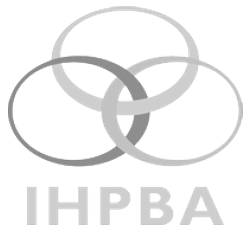Survey on Hospital Factors Affecting Failure to Rescue in Pancreatic Surgery
Introduction: In PancreasGroup.org 1, the largest global collaborative trial on factors related to short-term outcomes in pancreatic surgery recently published in BJS, significant variations in Failure-to-Rescue (FTR) rates were shown between countries of low/middle versus high/very high human development index (HDI). PancreasGroup.org 2 aims to investigate aspects related to FTR globally, and specifically to understand the importance of factors affecting FTR on a hospital and institutional level. Thus far, mainly patient or tumor specific aspects and hospital volume were reported to affect FTR. Potentially modifiable aspects on a hospital and institutional level however are poorly investigated, and their understanding might contribute significantly to reducing FTR rates after pancreatic surgery. Insights will be crucial for addressing hospital and resource specific areas of improvement worldwide, enhancing patient care in pancreatic surgery and advancing safety standards in this area across the globe.
Eligibility: All centers having participated in PancreasGroup.org 1 as well as new centers will be asked to participate, which included any institution worldwide performing pancreatic surgery, with no minimum number of cases performed annually or specific selection criteria for centres.
Methods: A global survey is conducted among experts in pancreatic surgery across countries of all HDI levels, on factors thought to affect FTR on an institutional level, and their local availability, using a web-based case report form (CRF) for data submission. Data analysis will include the development of a prediction model for FTR using the obtained data on hospital related factors, together with data on patient and tumor related factors extracted from the available PancreasGroup.org 1 database. The model will address all types of pancreatic surgeries in adults, across various indications and extents of pancreatic resections performed. The model will be validated internally using data from the PancreasGroup.org 1 and 2 studies. International collaborations will be established throughout the project to assess global strategies for improvement of care with regards to institutional availabilities and resources affecting patient care in pancreatic surgery worldwide. The survey opened on 15th December 2023 and deadlined extended to February 2029, 2024.
Outcomes: The primary endpoint of the analysis is the investigation of potentially modifiable risk factors on a hospital level, to develop a prediction model for FTR after pancreatic surgery. Secondary endpoints include the establishment of international collaborations to improve patient safety in pancreatic surgery across the globe.
Data ownership: Regulations from PancreasGroup.org 1 will apply to the Pancreasgroup.org 2 study. The headquarters at the Royal Free Hospital in London, UK acts as the custodian of all data. The Scientific and Management committees together will decide about requests regarding secondary analyses after publication of the main report, considering all such requests based on quality and the validity of the proposed project.
Authorship: A single analysis and reporting without hierarchical authorship (no first author, no last author) is planned at the end of the study (a “pure” group author publication) to reflect the collaborative effort, in keeping with other global snapshot studies. All collaborators will be PubMed cited in the main publication as well as in any future studies. Spin-off studies may include formal authorship but must include the “PancreasGroup.org Collaborative” citing all participants.
Survey Paper Version: Click on the PDF icon below to download the paper version of the survey:




